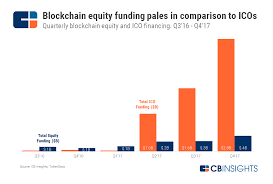Economics

1. Tokenomics
Tokenomics refers to the study of the design, function, and economic impact of cryptocurrency tokens within their respective ecosystems. It encompasses several key elements:
- Token Design: This involves the creation of a cryptocurrency token, including its technical specifications and its role within a blockchain ecosystem. Tokens can represent various assets, such as digital currencies, ownership stakes, or even access rights within a platform. The design choices include determining the total supply, distribution mechanisms, and utility.
- Economic Implications: Tokenomics examines how the design of a token influences its value and the overall health of the ecosystem. Factors such as supply limits, inflation rates, and incentives for holders or users play a critical role in shaping the token’s economic environment. For example, a token with a capped supply might be designed to appreciate in value over time, whereas a token with mechanisms for regular burns (removal of tokens from circulation) could help maintain its value.
- Incentives and Rewards: Tokenomics also looks at how tokens are used to incentivize behaviors within a blockchain network. This could include rewarding users for participating in network activities, such as validating transactions or contributing to governance decisions, thereby aligning individual incentives with the health of the ecosystem.
2. Market Dynamics
Market Dynamics in the cryptocurrency sector involves understanding how markets operate and analyzing various factors that influence trading and price movements.
- Market Analysis: This includes studying the trading volumes, market depth, and liquidity of cryptocurrencies. Analysts observe how these factors affect price stability and the ease with which assets can be bought or sold without significantly impacting their price.
- Trading Strategies: Cryptocurrency markets are known for their high volatility, which can be exploited through various trading strategies.
- Common strategies include day trading, where traders capitalize on short-term price movements, and swing trading, which focuses on capturing medium-term trends. Understanding these strategies requires analyzing historical price data, technical indicators, and market sentiment.
- Price Volatility: Cryptocurrency prices can experience significant fluctuations due to factors such as market sentiment, macroeconomic trends, technological developments, and regulatory news. Analysts study volatility patterns to forecast price movements and develop risk management strategies for investors.

3. Regulation Impact
Regulation Impact explores how changes in regulatory frameworks influence the cryptocurrency sector and its participants.
- Regulatory Frameworks: Different jurisdictions have varying approaches to cryptocurrency regulation. These can range from outright bans to supportive policies that foster innovation. Understanding these regulations helps stakeholders navigate the legal landscape and comply with relevant laws.
- Impact on Markets: Regulatory changes can have profound effects on cryptocurrency markets. For instance, stricter regulations might lead to reduced market liquidity or increased compliance costs for businesses, potentially affecting prices and market behavior. Conversely, favorable regulatory developments could boost investor confidence and market growth.
- Compliance and Adaptation: Cryptocurrencies and blockchain projects must adapt to evolving regulations, which may include anti-money laundering (AML) requirements, know-your-customer (KYC) rules, and taxation policies. These adaptations can influence how businesses operate and how users interact with cryptocurrency systems.
In summary, the economic aspects of cryptocurrency involve understanding tokenomics, which focuses on the design and economic effects of tokens; market dynamics, which entails analyzing market behavior, trading strategies, and price volatility; and regulation impact, which examines how regulatory changes affect the cryptocurrency ecosystem. Each of these areas provides valuable insights into the functioning and future development of the crypto economy.